Best backpacking tents 2025: lightweight shelters for adventurous explorers
The best backpacking tents for fast, lightweight and comfortable adventuring in any season

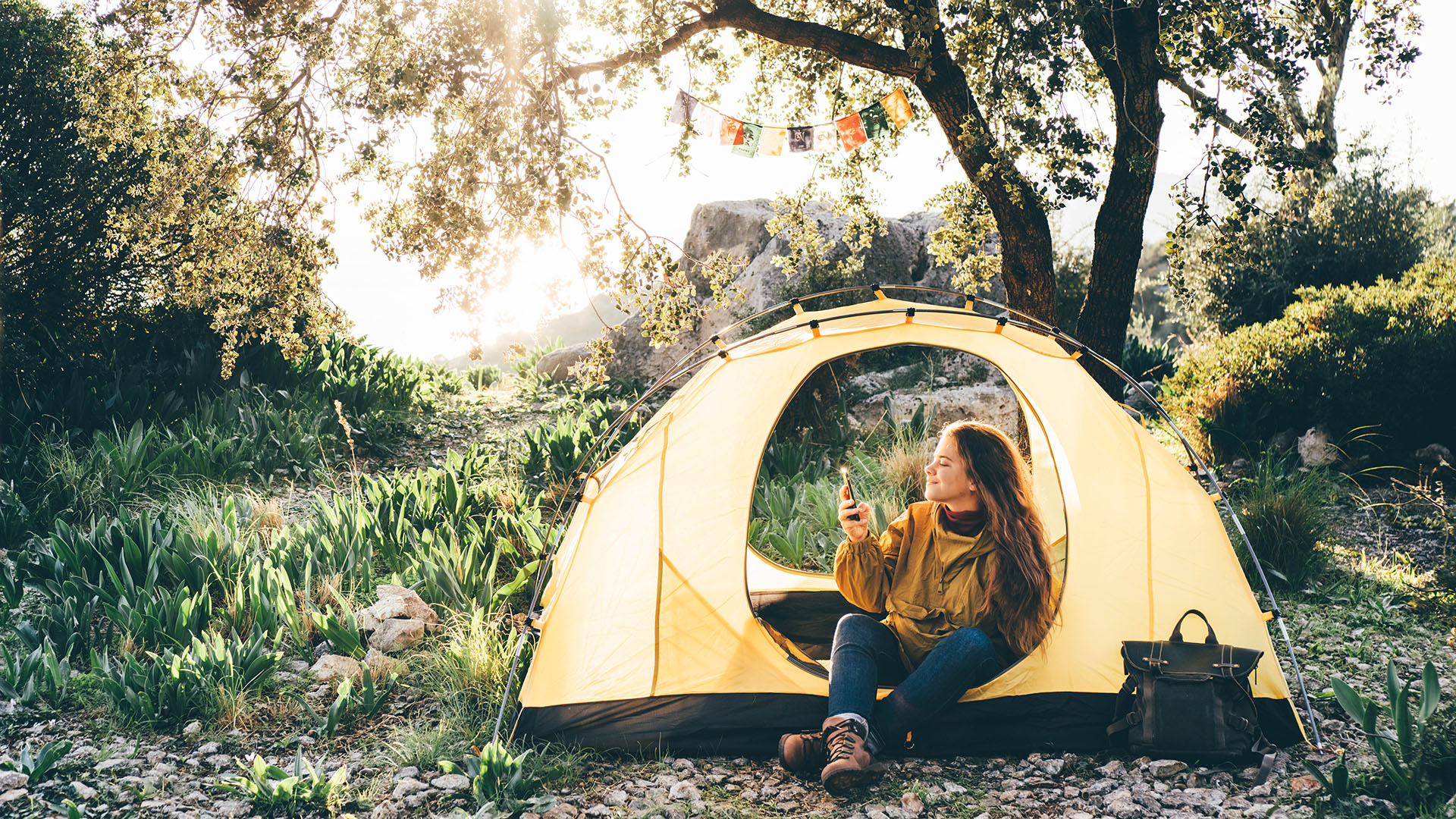
Looking for the best backpacking tent? Welcome to the ultimate guide where we pitch the top contenders against each other – metaphorically speaking, of course. Because let's be honest, no one wants to carry extra weight in their pack unless it's a bag of marshmallows for those campfire s'mores.
When it comes to backpacking, every gram counts. That's why our selection focuses on lightweight yet sturdy tents that won't have you questioning your life choices halfway up a mountain. From single-wall wonders to spacious shelters for two (or even three if you're cosy), we've got your back – literally.
So, grab your lightweight sleeping bag and camping mat, lace up those hiking boots, and get ready to hit the trails with confidence. Prefer car camping? Check out our favourite large shelters in T3's best tent roundup.
Our current favourite backpacking shelter is Big Agnes's Copper Spur UL3 XL. It's wonderfully spacious and offers a ton of useful features for backpackers, from extra headroom to clever pockets. The North Face's Trail Lite 2-Person Tent is not far behind in terms of comfort and convenience and is also an excellent choice for festivals. Finally, the Fjallraven Abisko Lite 2 is a sterling choice for year-round camping.
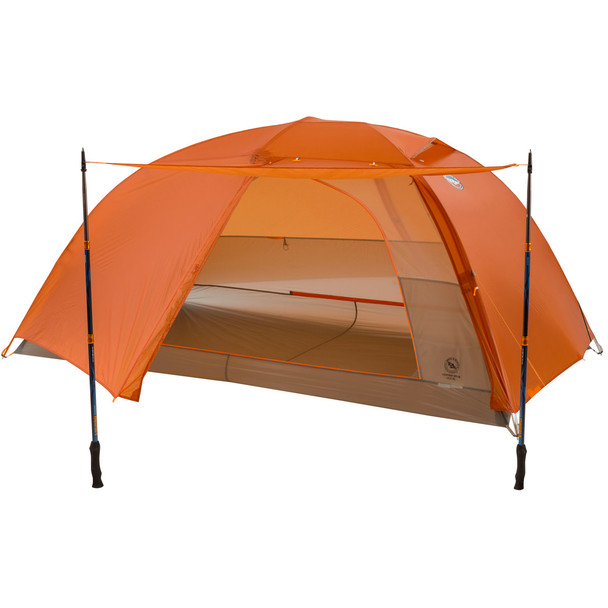
The Big Agnes Copper Spur UL3 XL is an ultralight palace for backpackers. It’s spacious, easy to pitch solo, and packed with clever features like awning-style vestibules and loads of storage. Despite its roomy design, it stays light and weatherproof – a brilliant all-rounder for comfort-focused, weight-conscious adventurers.
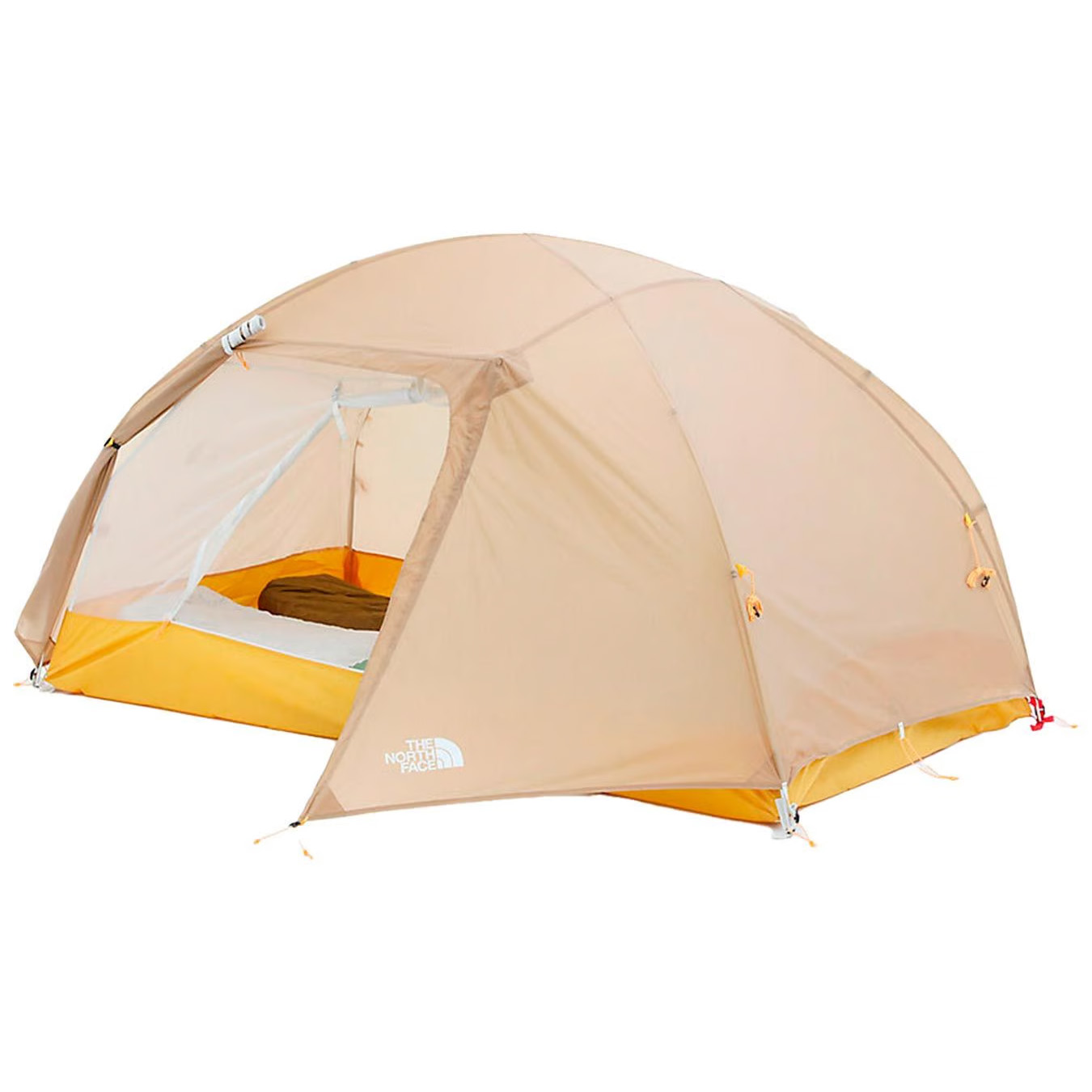
The North Face Trail Lite Tent is a solid investment for backpackers. It’s spacious, weatherproof, easy to set up, and lightweight for a 2-person shelter. Ideal for those who prioritise comfort and durability in outdoor adventures.
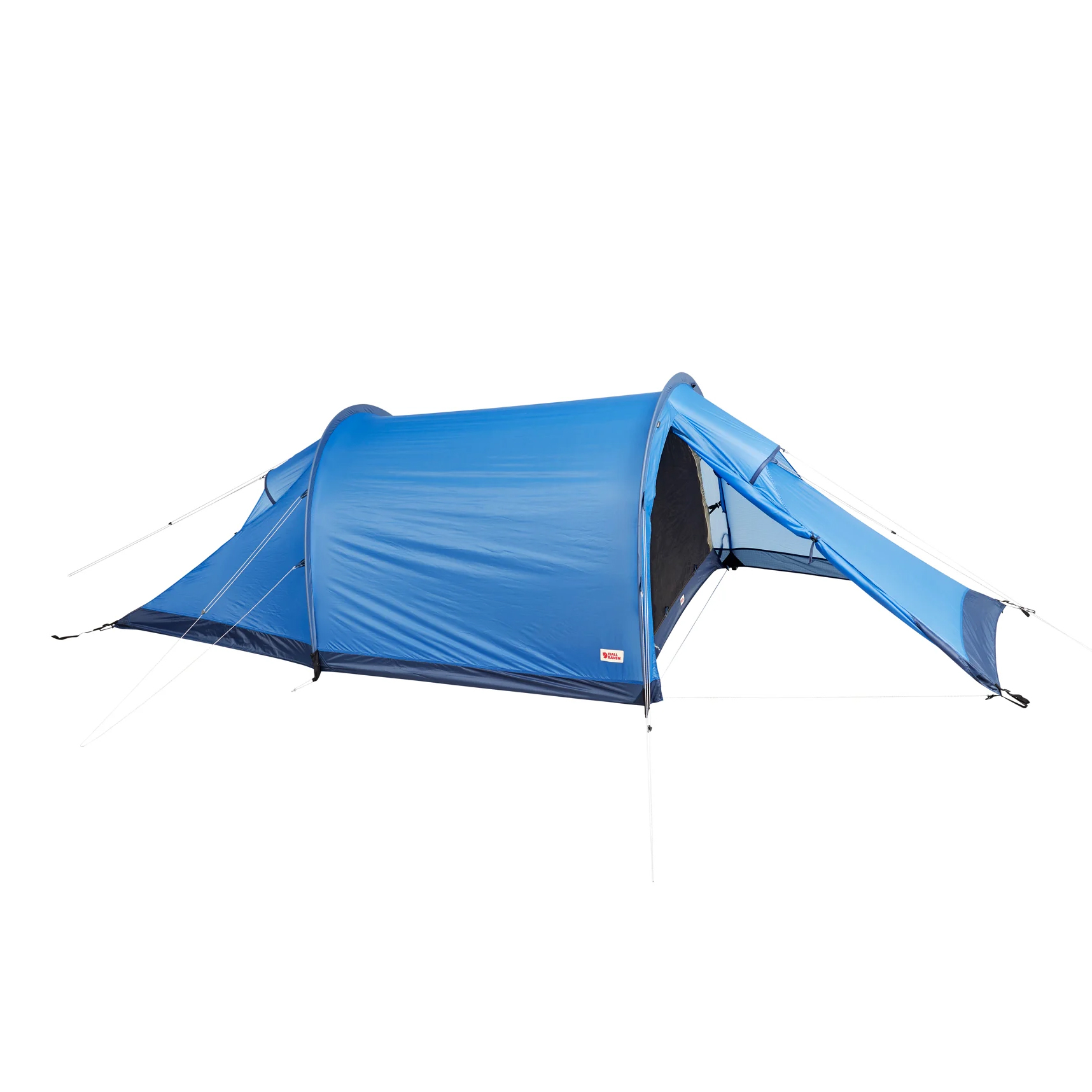
The Fjällräven Abisko Lite 2 is a tough, tunnel-style tent built for year-round adventures. It’s lightweight, weather-resistant, and pitches quickly in bad conditions. While it’s snug inside, the large vestibule and superb ventilation make it a reliable shelter for serious backpackers tackling mixed terrain and unpredictable mountain weather.
Best backpacking tents to buy right now
Best overall
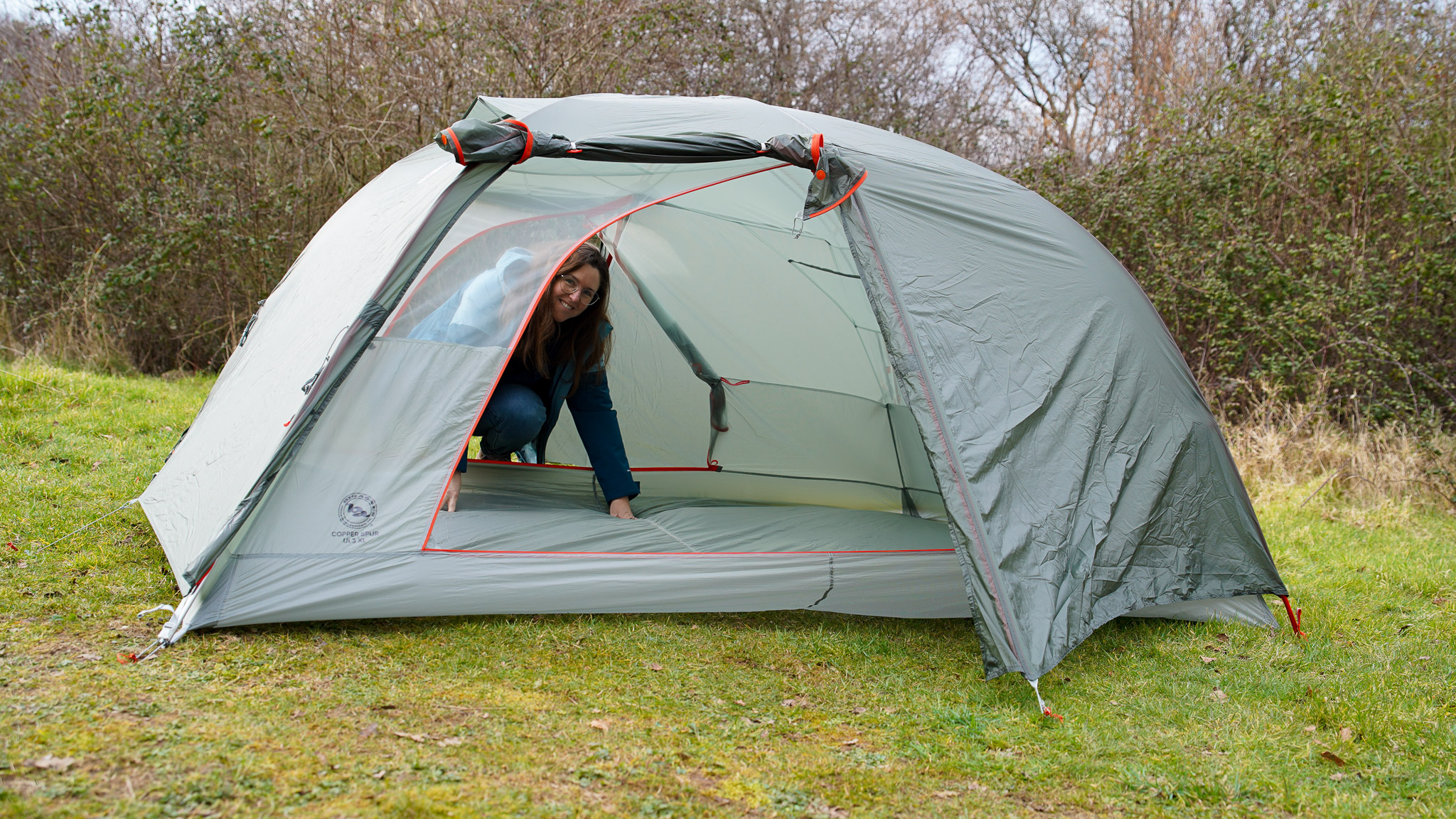

Specifications
Reasons to buy
Reasons to avoid
After testing the Big Agnes Copper Spur UL3 XL in various areas and weather conditions throughout the UK, I’m convinced this is the best backpacking tent out there right now.
It’s ridiculously roomy for its weight: a true ultralight tent that somehow feels like a palace inside. I had space to stretch, stash my pack, and still had room to spare. Setting it up solo was a breeze, thanks to the intuitive pole system and colour-coded clips, and it handled a blustery night without so much as a flap out of place.
What really stood out was the attention to detail: the oversized vestibules with awning options (you'd need trekking poles for the latter) are a game-changer for cooking in the rain, and the interior pockets and gear lofts make organisation easy. The new Hyperbead fabric kept things dry and didn't sag when wet, which is a big win in damp UK conditions.
If you’re planning multi-day treks or want a single tent that can do it all – solo missions, couples, or even two mates sharing – this is the one to get. It’s pricey, sure, but if you want to go light without sacrificing comfort or space, the Copper Spur UL3 XL is absolutely worth it.
Read our full Big Agnes Copper Spur UL3 XL review.
Best two-person
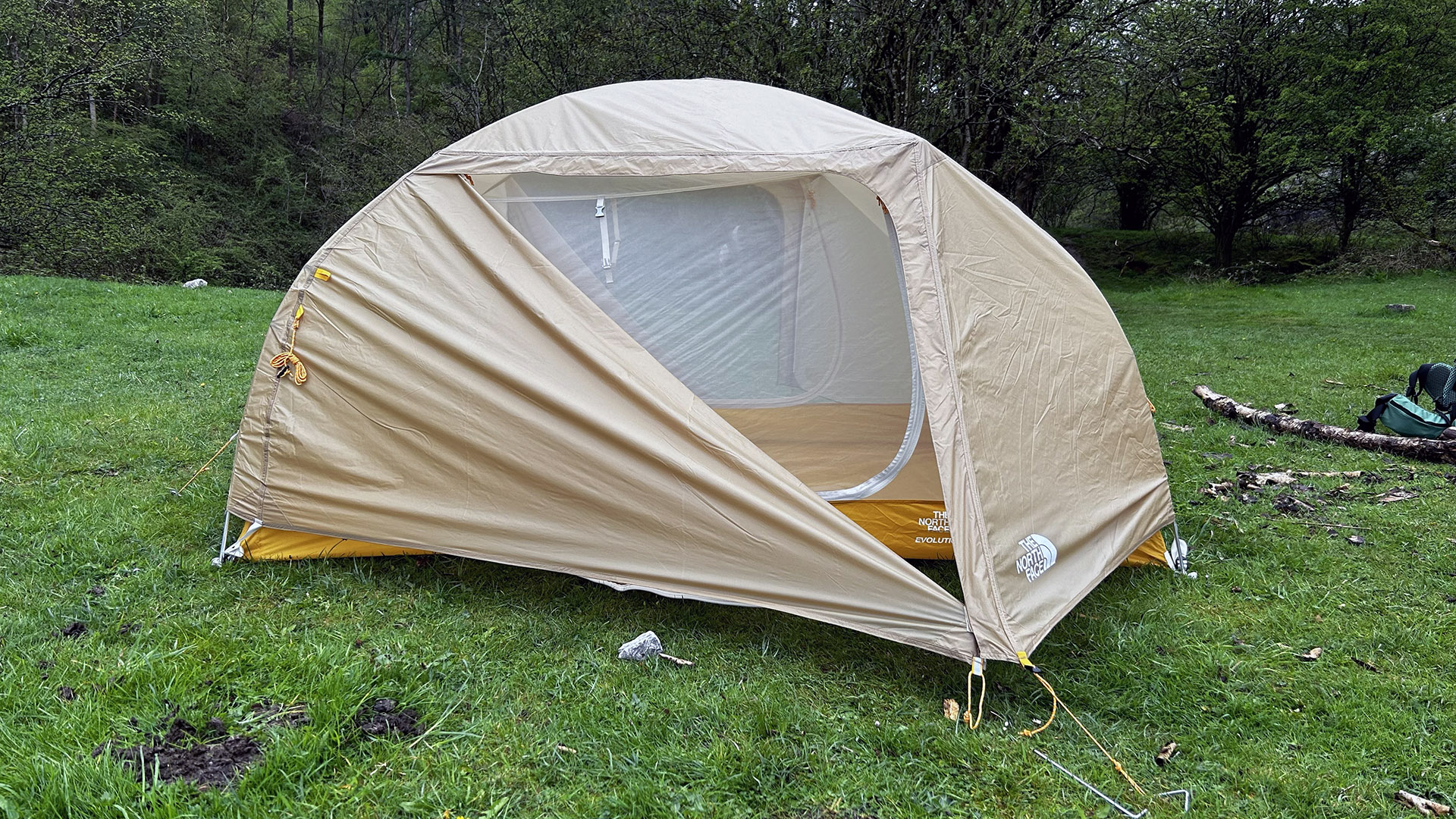
Specifications
Reasons to buy
Reasons to avoid
Part of The North Face's Technical Collection, the Trail Lite 2-Person Tent is my top choice for couples. While lighter options exist, none match its combination of spaciousness, portability, and waterproofness.
Equipped with premium features, it's a valuable investment for serious backpackers. Constructed with a 20D nylon Ripstop fly and a 75D polyester floor, it offers durability and protection. Oversized doors and vestibules provide ample ventilation and storage.
During testing, it proved resilient against rain and wind, boasting easy assembly and stability. Despite its lightweight, it offers generous space and comfortable height. The DWR-treated bottom layer ensures dryness even on wet ground, while large openings allow for excellent airflow.
Versatile and reliable, The North Face Trail Lite 2-Person Tent is ideal for backpackers seeking quality and performance. While cheaper alternatives exist, this tent is a worthwhile investment for those prioritising durability and comfort on their outdoor adventures.
Read our full The North Face Trail Lite 2-Person Tent review.
Best year-round use


Specifications
Reasons to buy
Reasons to avoid
We took the Fjällräven Abisko Lite 2 on a mixed spring hike through Snowdonia, and it didn’t just survive – it thrived. This is a tent built for serious mountain weather. The tunnel design gives it impressive stability in high winds, and the flysheet’s tough, eco-friendly fabric shrugged off rain and abrasion from the rocky terrain. At just over 2kg, it’s light enough to carry on longer treks without cutting too many corners on comfort or durability.
Pitching was quick once we got the hang of it. The inner and outer can be pitched simultaneously, which is exactly what you want in sideways rain. Inside, the tent feels snug but not cramped. There’s decent headroom, space for two sleeping mats, and a roomy vestibule for gear or cooking if conditions turn foul. Ventilation is also excellent, with minimal condensation even after a damp night.
This isn’t the tent for casual summer glamping; it’s for year-round backpackers who want gear that won’t let them down. If you hike in varied terrain and need something dependable, weatherproof, and made with sustainability in mind, the Abisko Lite 2 is a brilliant choice. It feels like a tent you can trust.
Read our full Fjallraven Abisko Lite 2 review.
Best ultralight (two-person)
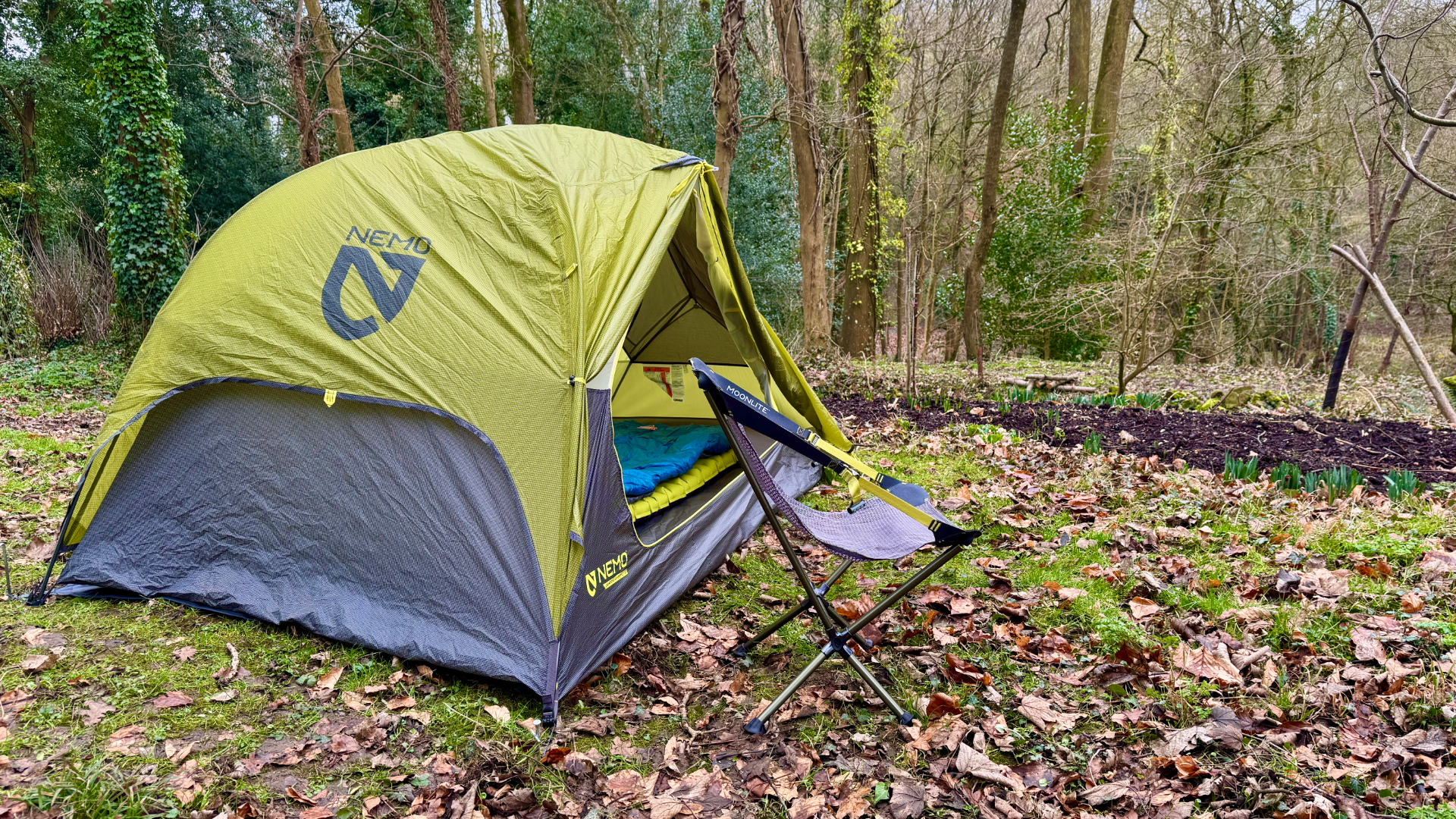

Specifications
Reasons to buy
Reasons to avoid
There’s a reason the NEMO Dragonfly OSMO 2P has become a cult favourite among fast-and-light backpackers, and after testing it on a wet and windy overnight trip in the Brecon Beacons, we get the hype. It’s not trying to be the biggest or burliest tent. Instead, it nails that elusive balance between low weight, smart design, and livability.
The OSMO fabric is genuinely impressive: water-resistant, quick to dry, and doesn’t stretch and sag like traditional nylons when wet. The pole structure is simple but cleverly shaped to maximise internal space, with a nice bit of headroom for sitting up. At under 1.4kg, it barely made a dent in our pack weight, yet we never felt like we were roughing it.
Where the Dragonfly really shines is in the thoughtful touches: the dual doors, generous vestibules, Nightlight pockets and tidy stash zones all make life easier when you’re tired, damp, and just want to get sorted. It’s not the tent we’d take into a snowstorm, but for multi-day hikes in three-season conditions – especially if weight matters – it’s an excellent option. Consider this the minimalist’s tent that doesn’t make you compromise where it counts.
Read our full Nemo Dragonfly OSMO 2-Person Tent review.
Best solo
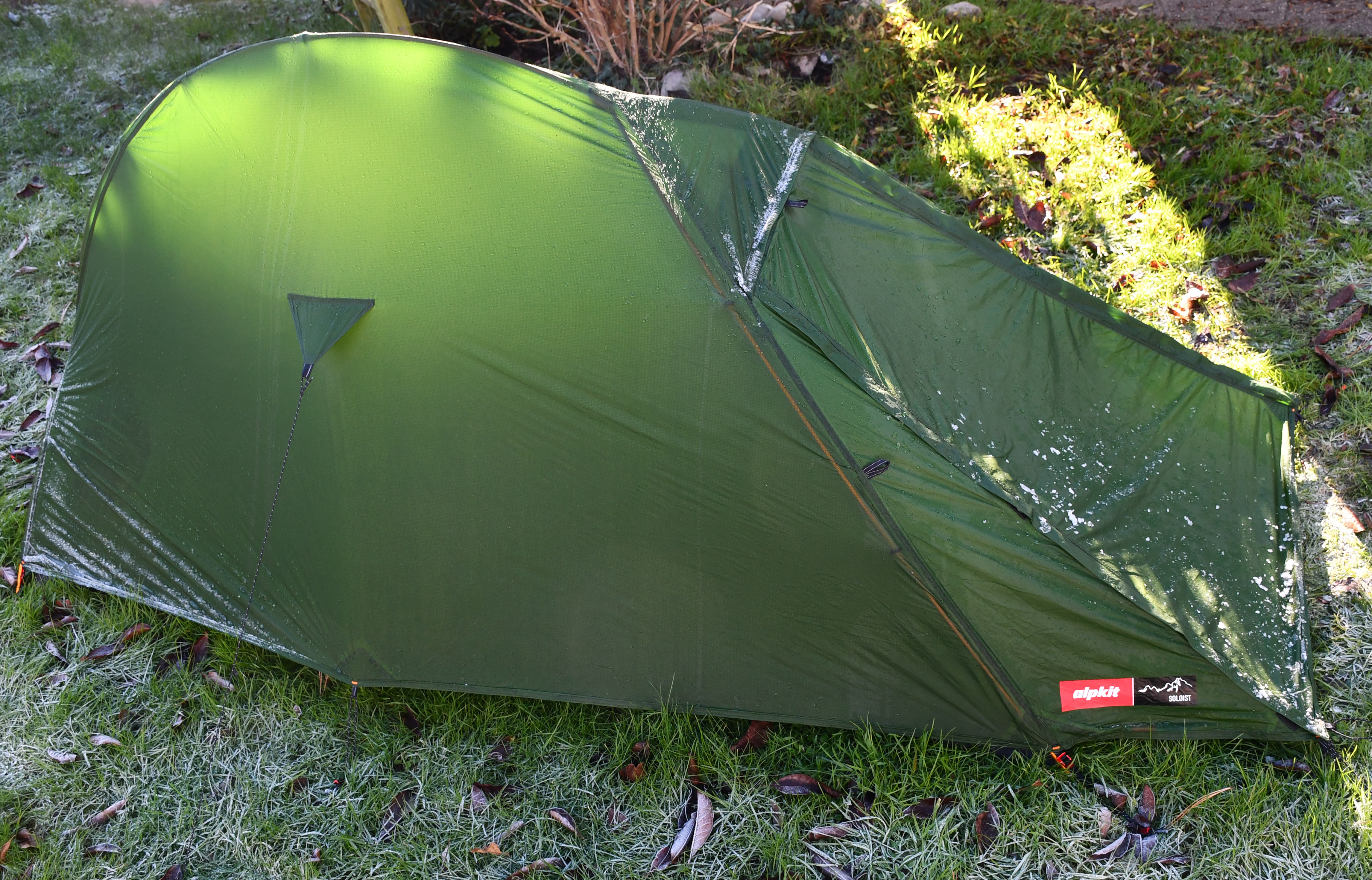
Specifications
Reasons to buy
Reasons to avoid
The Alpkit Soloist, a 1-person, 3-season backpacking tent, boasts a semi-geodesic shape that ensures remarkable stability even in harsh wet and windy conditions. Setting up and taking down the Soloist is a breeze, thanks to its simple and quick assembly, and it packs away neatly and compactly for easy trail transport.
With a standard interior length of two meters, most users will find ample space to lie down comfortably, while taller backpackers can opt for the extra-large version. While the tent's design features a reasonably spacious porch area, it may not be large enough for cooking during heavy rain. However, it provides sufficient room for food preparation and storage of wet gear.
Though lacking interior storage pockets for better organisation, the Soloist performs admirably in heavy weather conditions, as demonstrated in Scotland. Additionally, in warmer months, the tent can be used without a flysheet, while its kelp-coloured exterior offers discreet camping opportunities for wild campers.
Read our full Alpkit Soloist review.
Best ultralight (one person)


Specifications
Reasons to buy
Reasons to avoid
Need an ultra-lightweight tent for hiking adventures? The Sierra Designs High Route 1 3000 1P tent is made for just that scenario. In fact, thanks to a smart design twist that we're amazed nobody's thought of before, it's only suitable for hikers. To keep it light and packable, this tent doesn't come with poles; instead, you pitch it using your own trekking poles for support.
That's a brilliant idea, frankly, but we should warn you that you'll need decent poles; we tried it with cheap and flimsy ones, and it wouldn't stand up properly, but got much better results with higher-quality poles. Sierra Designs insists that pitching is simple and intuitive, but we'd caution that it takes a bit of practice to get right. Breaking camp is quick and easy, though, and in between, you'll enjoy a roomy and well-specced tent that's versatile in its pitching options.
Read our full Sierra Designs High Route 1 3000 1P review.
Best budget
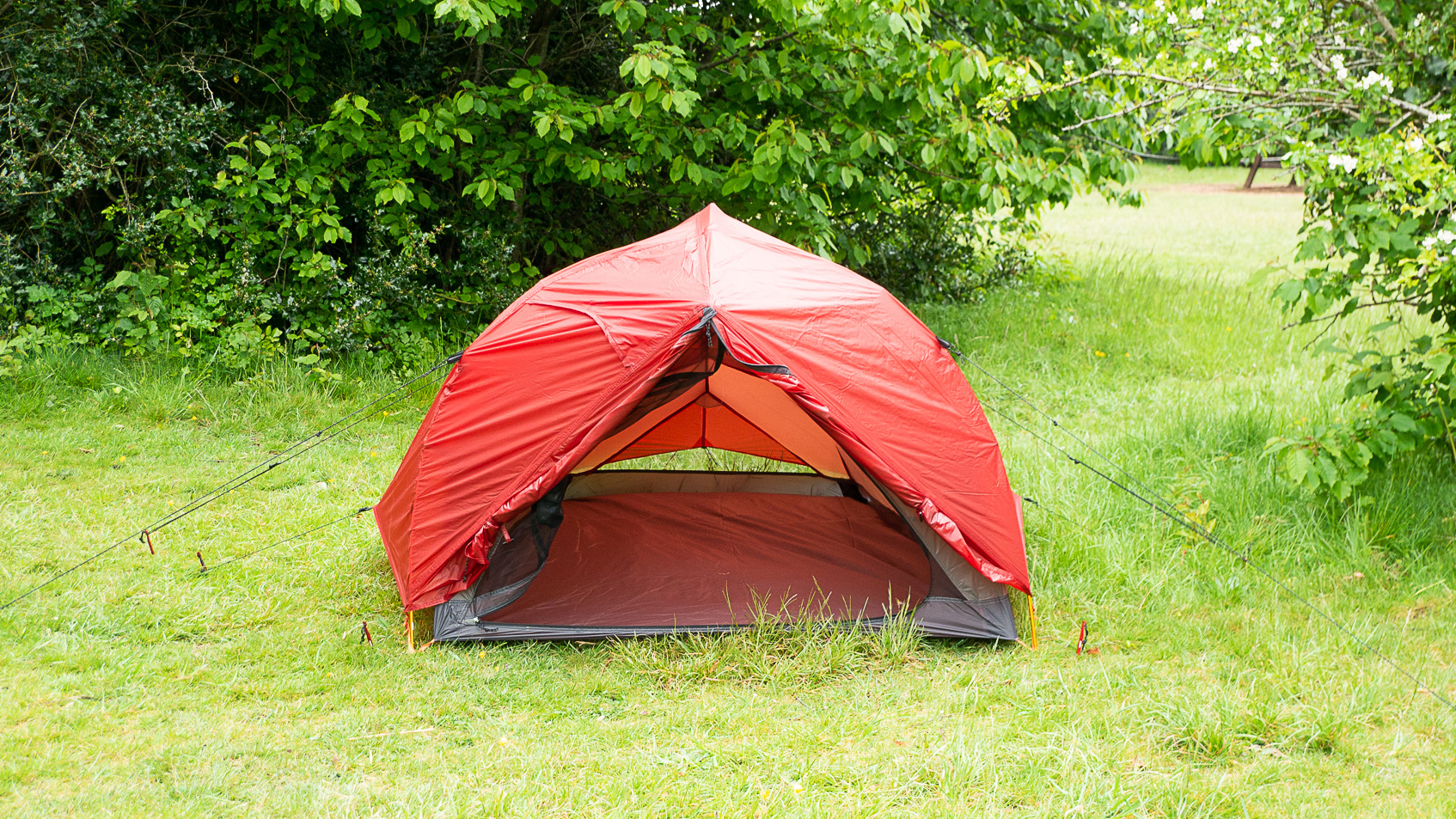

Specifications
Reasons to buy
Reasons to avoid
The Alpkit Ordos 2 is a superb lightweight backpacking tent, thanks to its combination of ease of pitching and affordability.
While it's designed for two people, it's particularly well-suited for solo adventurers. It offers reliable weatherproofing and comes in a compact, lightweight package, making it ideal for backpacking trips where space and weight are critical considerations.
Despite its small size, it provides enough room for two campers and their gear, though the porch area is somewhat cramped. One minor downside is the lack of multiple doors, which can make entry and exit slightly less convenient, especially for two occupants.
However, these drawbacks are outweighed by the tent's overall performance and value for money. The optional footprint accessory enhances waterproofing and protects the tent floor, making it a worthwhile investment for those venturing into wet or rocky terrain.
The Alpkit Ordos 2 strikes a balance between functionality, affordability, and portability, making it a practical choice for backpackers and wild campers seeking a reliable shelter for their outdoor adventures.
Read our full Alpkit Ordos 2 tent review.
Best for summer
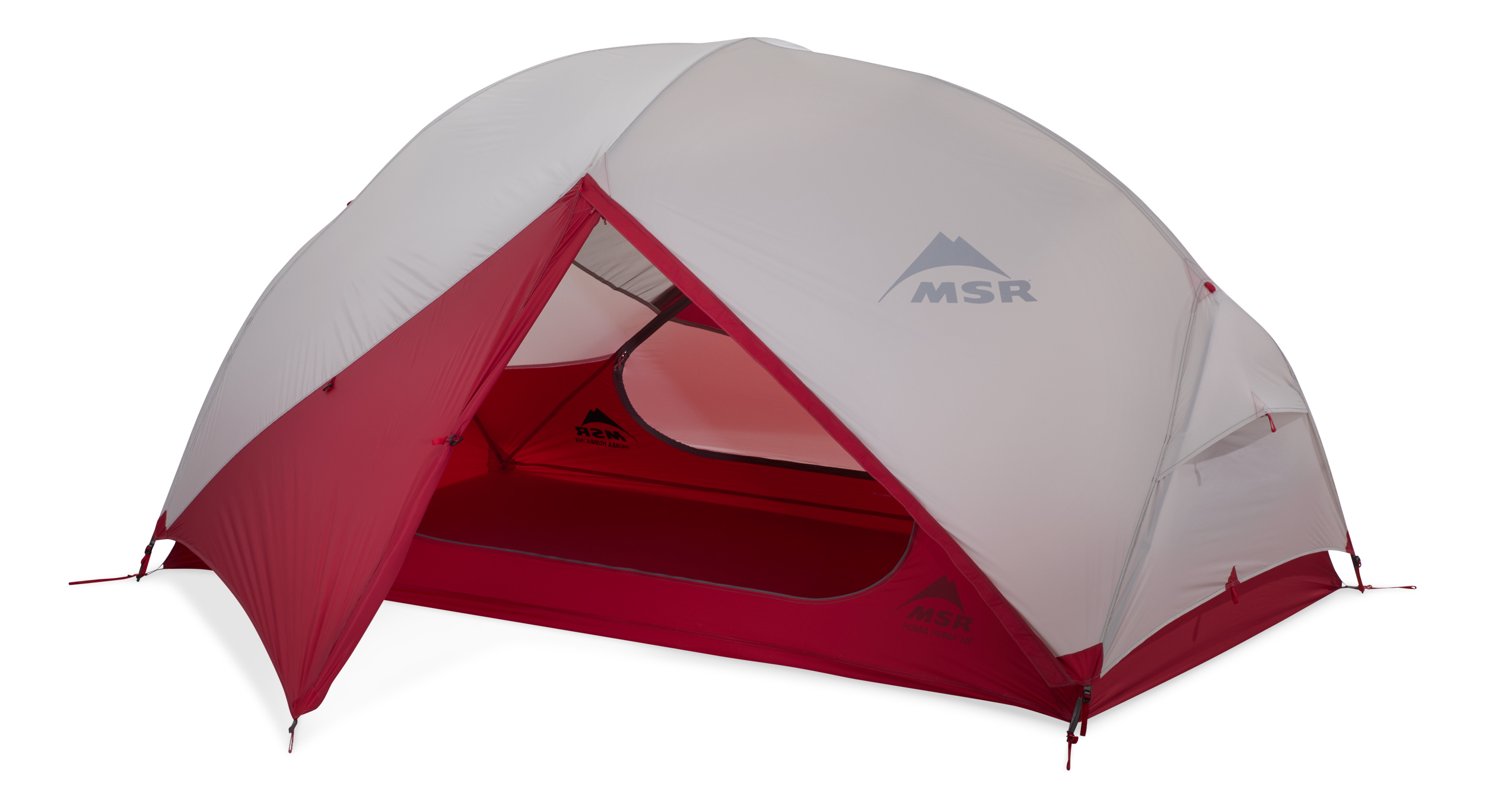

Specifications
Reasons to buy
Reasons to avoid
Despite the cheeky name, this award-winning MSR backpacking tent is all business. The hub pole design cleverly maximises the usable space inside the tent, including the head and elbow room, while ensuring it stays stable. There’s also a breathable mesh canopy offering unrestricted views of the scenery surrounding you. That, combined with a cross-ventilating flysheet, works to a) keep condensation at bay and b) boost airflow. That’s ideal for taking the edge off hot, sticky nights during summer backpacking trips. Built-in rain gutters are a godsend during wet-weather trips, though in general, we’d recommend the Hubba Hubba for warm-weather trips.
Honourable mentions
Sea to Summit Alto TR2 is a clever, semi-freestanding tent with great ventilation and a tiny packed size. It’s best for solo hikers or tight two-person trips, but space is snug, and setup can be fiddly. Ultralight fans will love it, but others might prefer more living room.
The Sea to Summit Telos TR2 offers loads of headroom and clever features like the Hangout Mode tarp setup. It’s easy to pitch and ideal for warm-weather hikes, but it’s a touch heavier and pricier than rivals. A strong choice if livability and modular versatility are high on your wishlist.
Vango's F10 Project Hydrogen is for the purists. Featherweight and fast to pitch thanks to its air beam tech, the Project Hydrogen is ideal for solo missions where every gram counts. It’s a niche tent, though – expensive and compact to the point of being cramped if you’re tall or carry lots.
A decent entry into the ultralight category, the Vango F10 Neon UL1 is compact, easy to carry and good in fair conditions. It’s a tight squeeze and lacks some polish compared to premium solo shelters, but if you’re on a budget and packing light, it ticks the right boxes.
The Meteor Lite 2 from Sierra Designs is surprisingly roomy for a backpacking tent, with steep walls and twin doors. It handles summer adventures well and packs down small, though it’s not the most stormproof option. If comfort matters more than weight savings, this is a solid, affordable two-person tent.
The Jack Wolfskin Stratos Lite III is a well-built three-person tent with excellent ventilation, smart storage and a robust semi-geodesic design that laughs in the face of high winds. It’s roomy, quick to pitch and confidence-inspiring in poor weather, but it’s heavier and more expensive than others in this round-up.
How to choose the best backpacking tent for you
Choosing the perfect backpacking tent is like finding the ultimate adventure sidekick – it needs to be reliable, lightweight, and always up for the journey.
Pack size plays a starring role in this backpacking saga. You want a tent that plays nice with your backpack, not one that feels like an unwanted guest taking up precious space. Bonus points if it squeezes into your pack like a pro, but fear not if it ends up hitching a ride on the outside – it's all part of the adventure, right?
When Mother Nature decides to throw a tantrum, your tent should be your trusty shield against her wrath. Waterproof and sturdy enough to withstand gusty winds? Check. Easy to pitch and pack up in a flash? Double-check.
Comfort is key, my friend. A little extra space can go a long way when you're spending nights under the stars. Mesh windows for stargazing, pockets for tidying up your tent floor, and a cozy porch for rainy-day gear storage – these are the little luxuries that turn a good tent into a great one.
And let's not forget the golden rule of backpacking: a good night's sleep is worth its weight in gold. After a day of conquering trails, you deserve to rest and recharge in comfort. So, when you're on the hunt for the perfect tent, remember to strike a balance between weight, durability, and comfort. Your back, and your dreams of epic adventures, will thank you for it.
How we test the best backpacking tents
To test backpacking tents, we take them on backpaking trips, as many as possible, to see how they fare in real-world conditions.
We pay close attention to how the tent handles these conditions – are the seams watertight? Does the rainfly effectively repel moisture?
Ease of setup is another crucial factor to consider. A backpacking tent should be intuitive to pitch, even for beginners. We often time ourselves as we assemble lightweight tents.
We look for features like colour-coded poles and simple clip systems that make setup a breeze, even in low light or inclement weather.
Then, we climb inside and take stock of the space – is there enough room for you and your gear? Can you sit up comfortably without feeling cramped? We look for features that enhance comfort, such as interior pockets for storage, mesh panels for ventilation, and vestibules for storing muddy boots or wet gear.
Finally, we pack ithe tent away. A backpacking tent should be compact and lightweight, fitting seamlessly into your pack without adding unnecessary bulk. We practice rolling (or folding) the tent and stowing it in its stuff sack.
FAQ
Is 3kg too heavy for backpacking tent?
Most backpacking tents weigh less than 2kg, so unless you need a 3-people tent for your adventures, and happy to carry around the extra weight. As a general rule, you want to allow a maximum of one kilo of tent weight per person. That said, some of the 2-people tents can weigh as little as 1.4kg.
What type of tent is best for backpacking?
The best type of tent for backpacking is typically a lightweight, compact, and durable tent designed specifically for backpackers. These tents are often categorised as backpacking tents and are designed to be easy to carry in a backpack while offering sufficient protection and comfort for overnight stays in the wilderness.
They usually feature lightweight materials, such as nylon or polyester, and have a minimalist design to reduce weight without sacrificing functionality. Additionally, backpacking tents often have features like a rainfly, mesh panels for ventilation, and a sturdy frame to withstand various weather conditions encountered during backpacking trips.
Is 4 lbs too heavy for a backpacking tent?
Generally, backpackers aim for lightweight gear to minimise the strain on their backs during long hikes. A tent weighing 4 lbs (approximately 1.8 kg) would be considered on the heavier side for backpacking, especially for solo hikers or those embarking on multi-day trips where every ounce counts.
That said, a 4-lb tent might be perfectly acceptable for certain situations. For example, if you're sharing the tent with a partner and splitting the weight between two packs, or if you prioritise durability and comfort over ultralightweight construction.
What is the difference between a camping tent and a backpacking tent?
Camping tents are spacious with amenities for comfort and ideal for car camping and group outings. They're heavier due to their size and features. Backpacking tents are lightweight, compact, and designed for wilderness trekking. They prioritise portability for hikers carrying gear over long distances. Backpacking tents sacrifice space and amenities for minimal weight and pack size.
Get all the latest news, reviews, deals and buying guides on gorgeous tech, home and active products from the T3 experts

Matt Kollat is a journalist and content creator who works for T3.com and its magazine counterpart as an Active Editor. His areas of expertise include wearables, drones, fitness equipment, nutrition and outdoor gear. He joined T3 in 2019. His byline appears in several publications, including Techradar and Fit&Well, and more. Matt also collaborated with other content creators (e.g. Garage Gym Reviews) and judged many awards, such as the European Specialist Sports Nutrition Alliance's ESSNawards. When he isn't working out, running or cycling, you'll find him roaming the countryside and trying out new podcasting and content creation equipment.
- Pat KinsellaFreelance outdoor writer
- Mark Mayne